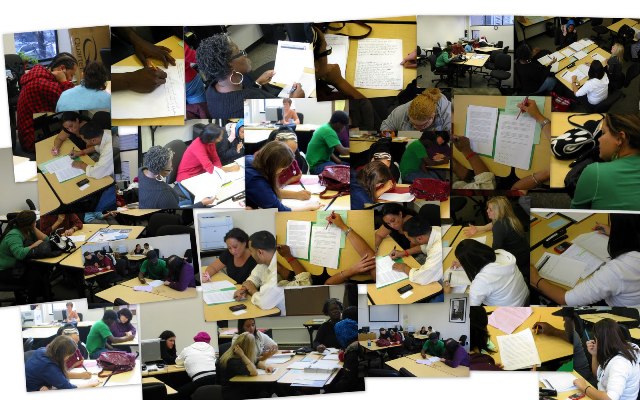Is Professional Development Paying Off?

Every K-12 teacher in New Jersey needs to create a professional development plan each year. Teachers pick the types of professional development opportunities they want to take part in. They are required to add at least 100 PD hours every 5 years.
When I was teaching in K-12, it was called the PIP - professional improvement plan. What's in a name? I'm a believer that when teachers improve their skills, it transfers to the classroom. Some of the best activities I participated in were at least partially "personal" improvement.
One of the best programs I became involved with over those years was the poetry program for teachers offered by the Geraldine R. Dodge Foundation.
The Dodge Poetry Program was begun in 1986 with a series of poetry in-service days for New Jersey teachers. Those evolved into the idea for a Poetry Festival. The Poetry Program’s Founding Director was James Haba (who was my professor at Rutgers as an undergrad) created the first 1986 Poetry Festival. Since then, there have been twelve biennial Dodge Poetry Festivals, which now routinely attract audiences of 17,000 to 20,000. The Festival is the largest poetry event in North America. (see dodgepoetry.org/festival-2010) The Foundation expanded the poetry offerings to include poet visits to New Jersey high schools and professional development for teachers.
One of the opportunities for teachers offered was called "Clearing the Spring, Tending the Fountain." Small groups of teachers across the state met for a number of weeks to read, write and discuss poetry. The first year that I participated, I asked Jim Haba why there wasn't more discussion about "lessons" to take back to the classroom. Jim was pretty adamant that he didn't want that in the sessions. He believed that if the participants were really involved in poetry as readers and writers, it would enter the classroom naturally. I believe he was correct.
But when we read reports on professional development for teachers at all levels, the assessment of it always points to one goal: improving student achievement.
A post on the blog A Plethora of Technology asked the same question that I ask in this post: Are we wasting our time (and money) with professional development?
A report on how teacher professional development affects student achievement released in 2007 by the Regional Educational Laboratory (U.S. Dept. of Education) contained the disturbing statistic that by their standards only 9 of 1300 professional development programs studied had any value.
The study did show that quality professional development raised student achievement by an average of 21 percentile points.
The conclusion from the report is that professional development is worthwhile, but quality professional development is lacking.
What isn't made clear is what works. What are the components that make for effective PD?
Having spent the past ten years offering professional development for teachers (mostly for higher education), I'll admit that measuring the effectiveness of the transfer of PD to the classroom is difficult. I believe the PD works, but it's hard to provide good evidence beyond anecdotal evidence. I don't believe that any surveys or matrices will give accurate evidence for or against professional development.
Resource: PROFESSIONAL DEVELOPMENT:LEARNING FROM THE BEST (pdf)
 A component of the Writing Initiative is to make connections with the area high schools that send students to the college, and next year to connect with the 4-year colleges where our students often matriculate after completing their Associate degrees. It's what I think of as part of sending out more ripples from the center of the Initiative. We are looking to collaborate with teachers from area schools to introduce writing assignments into classrooms across disciplines.
A component of the Writing Initiative is to make connections with the area high schools that send students to the college, and next year to connect with the 4-year colleges where our students often matriculate after completing their Associate degrees. It's what I think of as part of sending out more ripples from the center of the Initiative. We are looking to collaborate with teachers from area schools to introduce writing assignments into classrooms across disciplines.